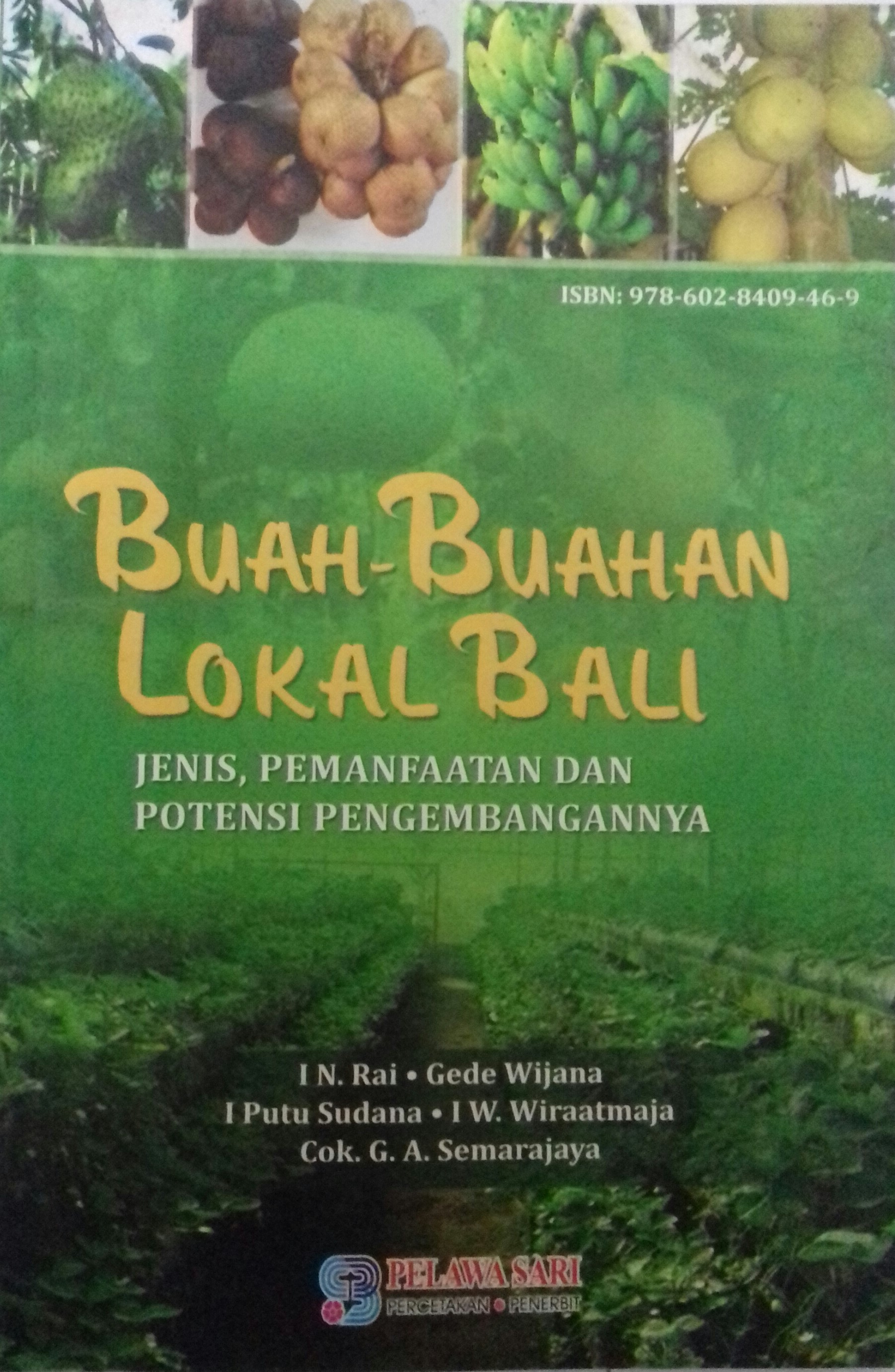
BALI LOCAL FRUITS
I.N. Rai; Gede Wijana; I Putu Sudana; I WAYAN WIRAATMAJA; Cok.G.A. Semarajaya.
ISBN : 978-602-8409-46-9 Published : 2016
Abstrak
Bali Province is rich in genetic resources of local fruits, not only of economic value for meeting food needs, inter-island trade and exports, but also of social and cultural value for traditional and cultural ritual activities, tourism consumption and Spa materials (massage). Lack of attention in its development causes local fruit to compete with imported fruit, its existence is increasingly pressed, even many of them are classified as rare. The large tourism market in Bali is also still limited in the use of local fruits. The urgency of the existence of local fruits encouraged the Bali Regional House of Representatives to issue a Bali Provincial Regulation Number 3 of 2013 concerning Protection of Local Fruits, where one of the important things stated in the Regional Regulation was the need for the provincial government of Bali to strengthen, empower and protect genetic resources and fruit products. through integration with tourism activities. This book examines the types and sub-types of local fruits that Bali has, their uses for various aspects of life, superior fruit commodities, harvest season calendars, potential for development, and protection, with the hope of being used as a source of information so as to facilitate producer-consumer relations between local fruit farmers with tourism (hotels, restaurants, etc.) so that there is an increase in the implementation of the integrity of agriculture with tourism. Types of local fruits and their uses in this book include: Grapes, Avocados, Starfruit, Bidara, Buni, Ceremai, Pomegranate, Dewandaru, Duku, Durian, Gowok, Water Guava, Jambu seeds, Jambu bol, Jamblang, Citrus, Kawapi, Kecapi , Kedongdong, Persimmon, Lychee, Mango, Mangosteen, Passion Fruit, Melon, Menteng, Mundu, Jackfruit, Pineapple, Papaya, Banana, Rambutan, Salak, Sawo, Watermelon, Soursop, Srikaya, Strawberries, Dutch Terung, and Wani. For postgraduate students, this book can be used as reference material for research discussions relating to their final project. This book can also be very helpful for fruit businesses, traders, hobbyists, Agricultural Service employees, and the general public who want to know and develop local fruits
